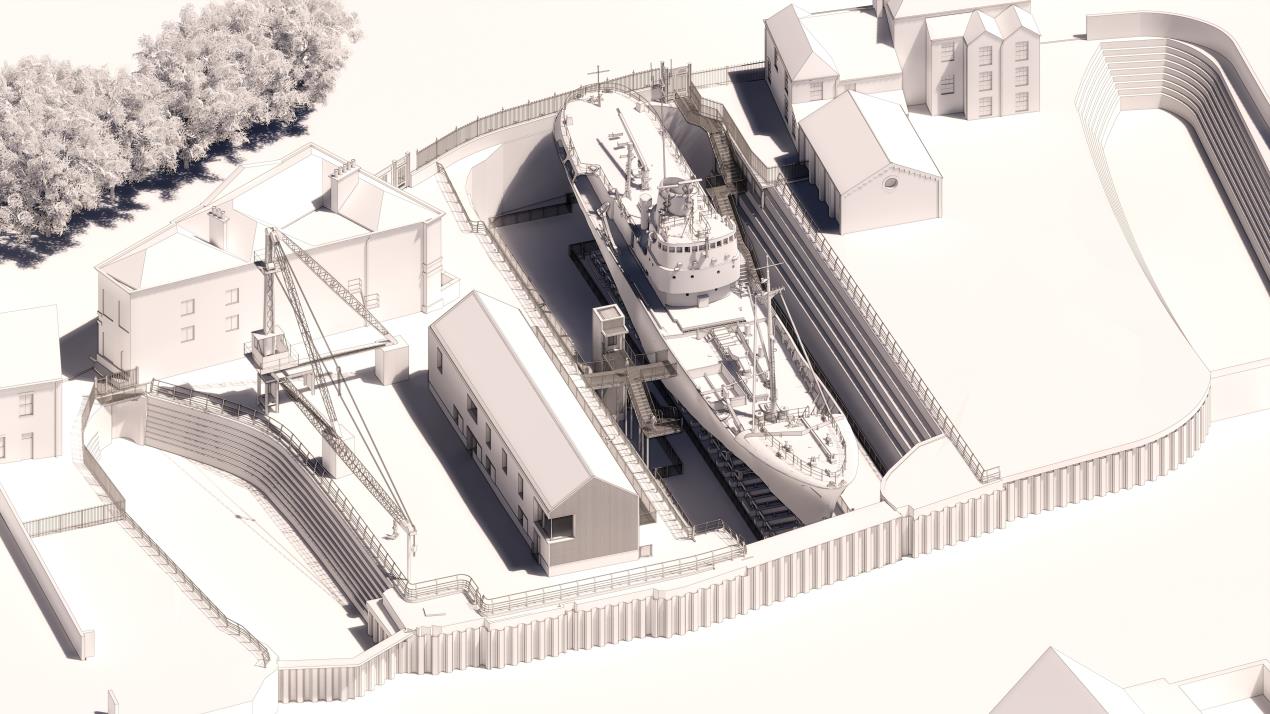A new maritime experience at Hull’s historic North End Shipyard is set to become one of the most energy efficient buildings in the UK’s cultural and heritage sector.
As part of the ambitious Hull Maritime project, the historic shipyard will become the new home of the Arctic Corsair, Hull’s last remaining sidewinder trawler.
To showcase and celebrate the trawler’s dramatic story, a state-of-the-art new ‘Passivhaus’ building – which is sympathetic to the industrial heritage of the area – will sit alongside the historic ship, the dock and the last Scotch Derrick crane in Hull.
The new visitor attraction, designed by architect Purcell, is being developed with meticulous attention to detail in order to achieve rigorous ‘Passivhaus’ standards – a German model, which reduces a building’s energy consumption, requiring very little energy to heat. This method achieves savings of up to 90 per cent compared to a typical new building. This is being achieved through early engagement of TGA Consulting Engineers with Purcell Architects and Hull City Council.
The exhibition area of the new visitor attraction will be typically heated using less than 1.3 kW per hour – that is equivalent to a small plug in domestic heater.
Passivhaus buildings provide high levels of comfort for staff and visitors, using mainly passive heat sources like the sun, household appliances and human occupants to cover heating demand.
The new two-storey visitor centre will include an entrance space, extensive exhibitions that will tell the story of Hull’s last remaining sidewinder trawler and the heyday of Hull’s trawling industry. An interactive learning space to engage and educate young people also forms part of the scheme.
The 500 sq m building will use a system of heat exchangers which collect heat leaving the building and use it to heat the colder air coming in. This approach will also cool the building in the summer.
In response to Hull City Council declaring a climate emergency and to support its 2030 Carbon Neutral Strategy, the building is targeting net zero carbon in operation. The building will generate energy through renewable technologies to offset the carbon associated with the energy consumed within the building.
Councillor Daren Hale, Portfolio Holder for Economic Investment, Regeneration, Planning, Land and Property, said: “North End Shipyard is one of Hull’s hidden gems, an area at the very heart of the city’s maritime and trade history which spanned the world.
“These highly ambitious plans will not only create a new visitor attraction that will showcase the many maritime stories but also achieve the best energy efficient standards.
“This will be a remarkable achievement and demonstrates our continued commitment to sustainability and to Hull becoming carbon neutral by 2030.”
Owen Plummer, Senior Architect, Purcell, said: “Purcell is delighted to be collaborating with Hull City Council in their commitment to a sustainable future for the city.
“Through our design of a new visitor centre to Passivhaus standards as a key aspect of the Hull Maritime project, this significant yet overlooked area of the city will be rejuvenated and brought back into use as a visitor destination in its own right and as part of the wider interpretation of Hull’s maritime heritage.”
Due to open in 2023, the new and exciting visitor attraction incorporating the Arctic Corsair, shipyard and visitor centre is expected to attract 135,000 visitors a year.
For more information on the ambitious maritime project, visit maritimehull.co.uk




